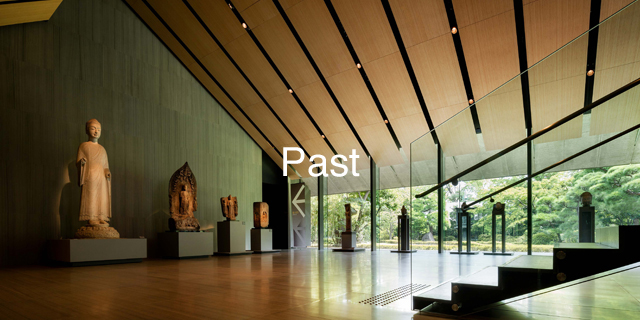
-
Museum Collection Exhibition
Introduction to Traditional Art
People in Painting - Saturday, September 11 - Sunday, October 17, 2021
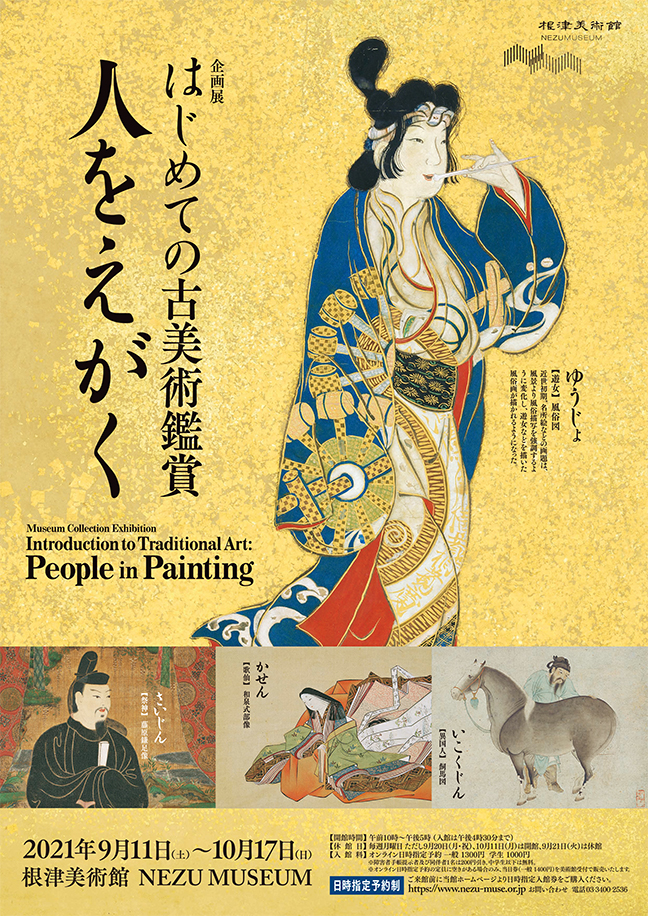

| Closed | Mondays, except September 20, October 11, and closed on September 21 |
|---|---|
| Hours | 10 a.m. - 5 p.m.(last entry: 4:30 p.m.) |
| General admission | Adult 1300 yen, Student 1000 yen |
| Gallery | 1/2 |
This exhibition is the fifth in our Introduction to Traditional Art series, which presents traditional art genres and their notable features in an accessible, easy to understand way. Our subject this year is a prime painting theme: people.
Today, paintings of the human figure are created as a matter of course. However, in ancient Japan—from about the sixth to the twelfth centuries—paintings of people were regarded as abominations. Yet even then, exceptions were made for painting people who were seen as sacred, who had become the objects of religious faith. Starting in the middle ages (twelfth through sixteenth centuries), however, paintings of people became standard, and all sorts of people were depicted.
This exhibition outlines the evolution of paintings of people and provides straightforward introductions to their main genres.
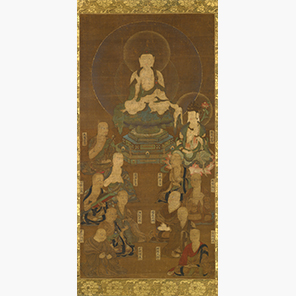

- Hossō Mandara (Hossō Sect Mandala)
-
Japan Kamakura period, 13th-14th centuries
Nezu Museum -
[Sacred Persons]
The figure at the top of this mandala painting is Shaka (Śākyamuni). At his feet are Miroku (Maitreya), the founder of the Hossō sect of Buddhism, of which Kōfukuji and Yakushiji temples in Nara are the head temples, and eleven other founders of Hossō. Asaṅga and Vasubandhu from India, Xuanzang and Ji (Jion-daishi) from China, and Genbō and other early Japanese Hossō leaders are arranged on the left and right. Together, this painting is a visual presentation of the Hossō Dharma lineage.
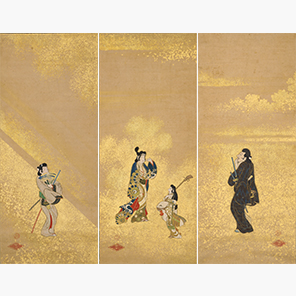

- Courtesan and Two Samurai
-
Japan Edo period, 17th century
Nezu Museum -
[People in the Ordinary World]
The center scroll in this triptych shows a courtesan with her young apprentice. On the right is a kabukimono, a rather eccentrically dressed, oddly behaved, aggressive samurai. A handsome young samurai appears in the left-hand scroll. The clothing, painted using gold pigment and rich colors, and the background decoration, with its extensive use of cut pieces and fragments of gold leaf, carry on the style of the Momoyama period (late sixteenth and early seventeenth century). The four figures’ lively expressions make this painting a masterwork among genre paintings from the start of Japan’s early modern period (1568-1868).
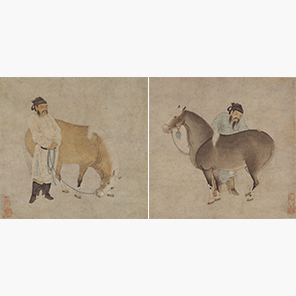

- Steeds and Stablemen
- By Kenkō Shōkei
-
Japan Muromachi period, 15th century
Nezu Museum Gift of Kobayashi Ataru -
[People in Foreign Lands]
These hanging scrolls depict horses and the men who care for them in delicate lines and pale colors. In China, people of other ethnic groups were a frequent painting subject. These paintings are best express the results of Shōkei’s study of Chinese paintings and are among his masterpieces.
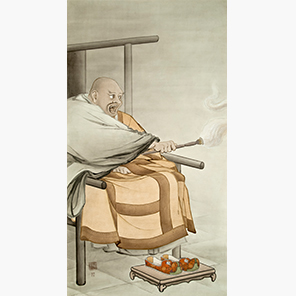
- Linji Yixuan Issues a Rebuke
- By Hashimoto Gahō
-
Japan Meiji period, dated 1897
Private Collection -
[The Human Figure in the Modern Period]
Linji Yixuan, the founder of the Rinzai sect of Zen, is depicted issuing a rebuke in a Zen question and answer session. In this painting, Hashimoto Gaho’s masterpiece, he makes the Kanō-school painting style his base while adding the delicate shadings to create three-dimensional effects that he had learned from Western-style paintings.
